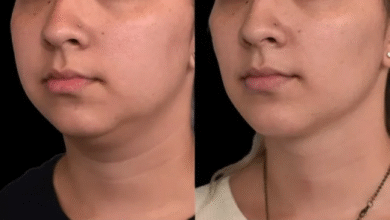Hidden Braces: The Discreet Path to a Straighter Smile
Orthodontic treatment has evolved significantly in recent years. While traditional metal braces are still widely used, many patients—especially adults and professionals—seek more discreet alternatives. Enter hidden braces, also known as lingual braces. These innovative appliances are virtually invisible because they’re placed on the back (lingual side) of the teeth, offering powerful correction with complete discretion.
This guide explores everything you need to know about hidden braces, including how they work, their advantages and drawbacks, who they’re best suited for, how they compare to other orthodontic options, and what to expect in terms of cost and care.
What Are Hidden Braces?
Hidden braces are orthodontic devices that are bonded to the back surfaces of your teeth—facing the tongue—making them invisible from the outside. This design is especially appealing to those who want the benefits of traditional braces without the noticeable appearance of metal brackets on the front of their teeth.
The concept of lingual (tongue-side) orthodontics has been around since the 1970s, but recent advances in customization, bracket design, and 3D technology have made hidden braces more comfortable and effective than ever before.
How Do Hidden Braces Work?
Hidden braces function just like conventional braces: brackets are bonded to each tooth, and a metal archwire connects them. Gentle pressure from the wire gradually shifts teeth into proper alignment. The key difference is placement—on the inside of the teeth, making the system completely concealed.
The treatment process typically involves:
-
Initial Consultation – Your orthodontist evaluates your bite, alignment, and overall oral health to determine suitability for lingual braces.
-
Digital Impressions – High-resolution scans or molds of your teeth are used to design custom brackets for precise fit and comfort.
-
Fabrication and Bonding – The brackets are manufactured and bonded behind your teeth in a single or multi-step appointment.
-
Adjustments and Monitoring – Regular visits are scheduled to monitor progress and adjust wires as needed.
Treatment time is comparable to traditional braces and varies based on the complexity of your case—typically 18 to 30 months.
Benefits of Hidden Braces
1. Complete Invisibility
The most obvious benefit of hidden braces is that they’re virtually undetectable. This is ideal for adults in professional environments, teens worried about appearance, and anyone who prefers a discreet orthodontic solution.
2. Effective for Complex Cases
Unlike clear aligners, hidden braces are fixed appliances that can handle complex cases such as severe crowding, rotations, or bite misalignments.
3. Customized Fit
Lingual braces are designed to match the exact contours of your teeth. This improves both comfort and precision, leading to better overall outcomes.
4. No Risk of Front-Tooth Stains
Because brackets are on the tongue side of the teeth, there’s no risk of visible marks or discoloration on the front surfaces.
5. Continuous Progress
As a non-removable solution, hidden braces work 24/7. Unlike clear aligners, you don’t have to remember to wear them or remove them when eating.
Drawbacks to Consider
1. Initial Discomfort
The placement of the braces near the tongue can cause soreness or irritation in the early weeks. Speech may also be temporarily affected.
2. Cleaning Challenges
It can be more difficult to clean behind the teeth, making oral hygiene more complicated. Patients must be diligent with brushing, flossing, and rinsing.
3. Higher Cost
Due to their custom design, specialized application, and increased chair time, hidden braces typically cost more than traditional braces or clear aligners.
4. Not Offered Everywhere
Lingual braces require additional training and experience. Not all orthodontists provide them, so access may be limited depending on your location.
Who Should Consider Hidden Braces?
Hidden braces are a great option for:
-
Adults who are concerned about aesthetics in work or social settings.
-
Teens who are self-conscious about wearing traditional braces.
-
Patients with complex orthodontic issues that may not be ideal for clear aligners.
-
People involved in performance or media professions who want invisible orthodontic solutions.
However, they may not be suitable for patients with very small teeth, a deep bite, or severe speech issues. Your orthodontist will help determine if you’re a candidate.
Hidden Braces vs. Other Orthodontic Options
Traditional Braces
-
Visible on the front of the teeth.
-
Effective for all cases.
-
Less expensive than lingual braces.
Clear Aligners (e.g., Invisalign)
-
Nearly invisible but removable.
-
Easier to clean teeth but require strict compliance.
-
Not ideal for severe or complex cases.
Ceramic Braces
-
Less visible than metal braces but still noticeable.
-
Slightly more fragile and may stain over time.
Hidden Braces
-
Completely invisible.
-
Best for image-conscious patients with complex alignment issues.
-
Higher cost and learning curve for speech/hygiene.
Cost of Hidden Braces
The cost of hidden braces generally ranges between $6,000 and $11,000, depending on factors such as:
-
Treatment duration
-
Case complexity
-
Orthodontist’s expertise
-
Your geographic region
-
Technology and materials used
Compared to traditional metal braces ($3,000–$7,000) or clear aligners ($3,500–$8,000), hidden braces are a premium option. However, many practices offer monthly payment plans, and patients can use FSA or HSA accounts to reduce out-of-pocket expenses.
Maintaining Oral Hygiene with Hidden Braces
Good hygiene is essential with lingual braces. Follow these tips to keep your teeth and gums healthy:
-
Brush after every meal using a soft-bristled toothbrush or electric toothbrush.
-
Use interdental brushes or floss threaders to clean between brackets.
-
Rinse with a fluoride mouthwash to help strengthen enamel and prevent decay.
-
Water flossers can be very effective for flushing out food particles from hard-to-reach areas.
Your orthodontist may recommend a professional cleaning every 3–4 months during treatment.
What to Expect During Treatment
During the first few weeks, you may experience:
-
A slight lisp or altered speech (especially “s” and “t” sounds).
-
Tongue irritation, which can be managed with orthodontic wax.
-
Difficulty chewing hard or crunchy foods—stick to soft foods initially.
These challenges usually resolve within 2–4 weeks as your mouth adjusts. Over-the-counter pain relievers can help manage initial soreness.
Are Hidden Braces Worth It?
If aesthetics and effectiveness are your top priorities, hidden braces are absolutely worth considering. They combine the power of traditional braces with unmatched discretion, making them one of the most advanced orthodontic solutions available today.
For many adults and teens, the confidence of having invisible treatment outweighs the higher cost and temporary challenges.
Final Thoughts
Hidden braces offer the best of both worlds—strong orthodontic performance and complete invisibility. They are an ideal solution for patients who need comprehensive treatment but want to maintain a natural look throughout the process.
Though they come at a premium price, the customized design, efficient results, and aesthetic benefits make them a valuable investment in your long-term smile and self-confidence.
Ready to explore your options? Schedule a consultation with a certified orthodontist who specializes in lingual braces and find out if this innovative solution is right for you.




